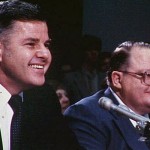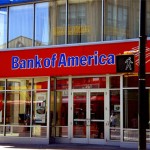The Ten Biggest Market Moments of 2011
These were the most defining moments for the markets in 2011, as decided by me – someone who’s relentlessly documented every event this year online, on the radio and on television. I’ve deliberately left out certain major world events like the Fukushima earthquake, the Arab Spring, the death of Bin Laden and the Occupy protest movement as I felt that they were not specific to the market even though they were impactful to some degree. – JB
10. David Einhorn Savages Green Mountain – In mid-October, the hedge fund manager took on one of the hottest stocks in the market, releasing a 110-slide presentation on  why Green Mountain Coffee Roasters was his newest short position. Einhorn, known for his very public takedowns of Lehman Brothers and Allied World in the past, laid out a multi-pronged thesis ranging from an overly promotional management team, mysterious transfers of stale inventory, bizarre accounting practices and a looming patent expiration that would lead to a flood of competition. Shareholders sold first and asked questions later – the stock was decimated, losing 30 points, dropping from 93 to 64 within a week and a half. On November 9th, Green Mountain reported a massive earnings disappointment and the stock promptly dropped another 30% after hours. He may have seen his deal to buy the NY Mets slip through his fingers, but in the battle of Green Mountain, it’s advantage: Einhorn for sure.
why Green Mountain Coffee Roasters was his newest short position. Einhorn, known for his very public takedowns of Lehman Brothers and Allied World in the past, laid out a multi-pronged thesis ranging from an overly promotional management team, mysterious transfers of stale inventory, bizarre accounting practices and a looming patent expiration that would lead to a flood of competition. Shareholders sold first and asked questions later – the stock was decimated, losing 30 points, dropping from 93 to 64 within a week and a half. On November 9th, Green Mountain reported a massive earnings disappointment and the stock promptly dropped another 30% after hours. He may have seen his deal to buy the NY Mets slip through his fingers, but in the battle of Green Mountain, it’s advantage: Einhorn for sure.
9. Muddy Waters Slams Sino-Forest – On June 2nd, there was a massive sell-off in shares of Canadian company Sino Forest, a timber concern with it’s assets in China. Sino  Forest had become the latest quarry of noted short-seller and research analyst Carson Block of Muddy Waters. Block released a blockbuster strong sell rating on Sino essentially alleging that the forests the company claimed ownership of simply didn’t exist – a shocking allegation given the size of the company and the pedigree of its largest shareholders (hedgie John Paulson was on the hook for a big chunk of stock, as were BlackRock, Hartford and Vanguard). The Toronto Stock Exchange promptly suspended trading. By year end the stock would practically disappear, wrecking everything in it’s path down the hill. The company is on the verge of default as of this writing having just missed the deadline to file it’s 3rd quarter financials. There were many Chinese frauds uncovered and busted on Western markets in 2011 but nothing even came close to the spectacle of the Sino Forest fraud.
Forest had become the latest quarry of noted short-seller and research analyst Carson Block of Muddy Waters. Block released a blockbuster strong sell rating on Sino essentially alleging that the forests the company claimed ownership of simply didn’t exist – a shocking allegation given the size of the company and the pedigree of its largest shareholders (hedgie John Paulson was on the hook for a big chunk of stock, as were BlackRock, Hartford and Vanguard). The Toronto Stock Exchange promptly suspended trading. By year end the stock would practically disappear, wrecking everything in it’s path down the hill. The company is on the verge of default as of this writing having just missed the deadline to file it’s 3rd quarter financials. There were many Chinese frauds uncovered and busted on Western markets in 2011 but nothing even came close to the spectacle of the Sino Forest fraud.
8. Raj Rajaratnam Convicted – As the proverbial big fish stemming from a massive investigation into hedge fund insider trading, Raj Rajaratnam had become the focal point  of law enforcement’s desire to score a big win. Raj was a billionaire hedge fund manager with ties throughout the industry and hooks into Fortune 100 companies from coast to coast; it is safe to say he is the highest profile Wall Street figure to be tried in decades. On May 11, a federal jury hands the Feds exactly what they were looking for: a conviction on all fourteen counts, including conspiracy and fraud, in a lower Manhattan courtroom. Raj will eventually be sentenced to fourteen years and ordered to pay a $92.8 million fine to the SEC. The traditional hedge fund research methods and intelligence network will never be the same again.
of law enforcement’s desire to score a big win. Raj was a billionaire hedge fund manager with ties throughout the industry and hooks into Fortune 100 companies from coast to coast; it is safe to say he is the highest profile Wall Street figure to be tried in decades. On May 11, a federal jury hands the Feds exactly what they were looking for: a conviction on all fourteen counts, including conspiracy and fraud, in a lower Manhattan courtroom. Raj will eventually be sentenced to fourteen years and ordered to pay a $92.8 million fine to the SEC. The traditional hedge fund research methods and intelligence network will never be the same again.
7. Silver Bulls Crushed at the Hunt Brothers High – In late 1979, the Hunt Brothers famously attempted to corner the market in silver and eventually drove the price up  to an all-time high of $48.70 per ounce by early 1980. And then a cascade of selling and margin calls knocked the precious metal (and its speculators) back into the stone age. The fabled Hunt Brothers High stood for thirty years, but as silver began to rally through 30 and then 40, it became obvious that it could serve as a magnet. Unfortunately for silver bulls, that old high also served as massive resistance. On April 26th, silver printed within pennies of that historic high and then promptly was crushed by 30% within 10 days back down to $32. Trend followers and those betting on “the big breakout” were hit so hard and so fast, they could barely even speak. It was reminder to investors that commodities are not stocks, their only inherent value is the price the next person is willing to pay.
to an all-time high of $48.70 per ounce by early 1980. And then a cascade of selling and margin calls knocked the precious metal (and its speculators) back into the stone age. The fabled Hunt Brothers High stood for thirty years, but as silver began to rally through 30 and then 40, it became obvious that it could serve as a magnet. Unfortunately for silver bulls, that old high also served as massive resistance. On April 26th, silver printed within pennies of that historic high and then promptly was crushed by 30% within 10 days back down to $32. Trend followers and those betting on “the big breakout” were hit so hard and so fast, they could barely even speak. It was reminder to investors that commodities are not stocks, their only inherent value is the price the next person is willing to pay.
6. MF Global Files for Bankruptcy – For months, shares of MF Global were trading as though something was wrong but market participants just chalked it up to the general  fear surrounding financial stocks, particularly those with brokerage operations. Then, in October, CEO Jon Corzine admits a $187 million trading loss from speculations he was making in European debt. Corzine had gone from golden boy to rogue trader overnight with that bomshell; just two months prior, MF had done a bond offering with a provision guaranteeing extra income if the company lost the former CEO of Goldman Sachs to a role in the President’s cabinet. On Halloween, after a frantic week of trying to save itself, MF Global files Chapter 11. It is a $41 billion bankruptcy – the eight largest in US history.
fear surrounding financial stocks, particularly those with brokerage operations. Then, in October, CEO Jon Corzine admits a $187 million trading loss from speculations he was making in European debt. Corzine had gone from golden boy to rogue trader overnight with that bomshell; just two months prior, MF had done a bond offering with a provision guaranteeing extra income if the company lost the former CEO of Goldman Sachs to a role in the President’s cabinet. On Halloween, after a frantic week of trying to save itself, MF Global files Chapter 11. It is a $41 billion bankruptcy – the eight largest in US history.
5. Bank of America in Free Fall – Of all the spectacular crashing and burning of 2011, nothing even comes close to the destruction in shares of Bank of America, a company  that lost almost two thirds of its market capitalization over the last 12 months. Every effort was made by management to please the investor base, from asset sales to mass layoff announcements (40,000!) to open conference calls hosted by mutual fund managers who were in disbelief at how low the stock was sinking with every passing day. BAC dropped from a January high of 15 to 10 by August – but it was just getting warmed up; from August to November it was cut in half again, trading to as low as 5.08 by Thanksgiving and wrecking the funds of John Paulson as well as the careers of several boldfaced mutual fund managers like Bill Miller and Bruce Berkowitz.
that lost almost two thirds of its market capitalization over the last 12 months. Every effort was made by management to please the investor base, from asset sales to mass layoff announcements (40,000!) to open conference calls hosted by mutual fund managers who were in disbelief at how low the stock was sinking with every passing day. BAC dropped from a January high of 15 to 10 by August – but it was just getting warmed up; from August to November it was cut in half again, trading to as low as 5.08 by Thanksgiving and wrecking the funds of John Paulson as well as the careers of several boldfaced mutual fund managers like Bill Miller and Bruce Berkowitz.
4. Gold Goes Parabolic – This summer, when the rubber began hitting the road in terms of borrowing costs for sovereigns like Italy, gold finally lived up to the safe haven  hype. From July 1st through the middle of August, Gold ran an incredible $400 an ounce, from 1440 to over 1840 – a staggering 30% in six weeks. This before ultimately succumbing to having become a “source of funds” for hedge funds with no choice but to sell assets. As of this writing, gold has notched a 13.7% year-to-date gain, besting virtually any other asset class one could invest in.
hype. From July 1st through the middle of August, Gold ran an incredible $400 an ounce, from 1440 to over 1840 – a staggering 30% in six weeks. This before ultimately succumbing to having become a “source of funds” for hedge funds with no choice but to sell assets. As of this writing, gold has notched a 13.7% year-to-date gain, besting virtually any other asset class one could invest in.
3. Greek PM Calls for Referendum – Markets around the world had been smashed beginning in August and culminating with the early October lows. As one of the worst-run  and most highly indebted of the 17-nation Euro Zone, Greece was the main focus of the turmoil. It was postulated that if Greece couldn’t be saved, all would be lost for both similarly-indebted countries (like Italy and Spain) as well as countries with high exposure to Greek bonds (like France). But all of a sudden, the rhetoric coming from Germany and Brussels began to get more constructive. US stocks staged a furious rally of almost 20 % from trough to peak into the end of October. The Euro ministers had come to an agreement on how to save Greece and for the first time in months, there was hope. And then on November 1st, the embattled Greek prime minister George Papandreou announces that he will not agree to the proscribed measures from the Euro Zone without first taking it to the people for a national referendum. Ministers in Europe who thought they finally had a resolution were indescribably shocked, markets from China to the US tumbled as investors began to distrust everything and everyone. Papandreou will eventually be thrown out of office for this gamble although the underlying issues still remain.
and most highly indebted of the 17-nation Euro Zone, Greece was the main focus of the turmoil. It was postulated that if Greece couldn’t be saved, all would be lost for both similarly-indebted countries (like Italy and Spain) as well as countries with high exposure to Greek bonds (like France). But all of a sudden, the rhetoric coming from Germany and Brussels began to get more constructive. US stocks staged a furious rally of almost 20 % from trough to peak into the end of October. The Euro ministers had come to an agreement on how to save Greece and for the first time in months, there was hope. And then on November 1st, the embattled Greek prime minister George Papandreou announces that he will not agree to the proscribed measures from the Euro Zone without first taking it to the people for a national referendum. Ministers in Europe who thought they finally had a resolution were indescribably shocked, markets from China to the US tumbled as investors began to distrust everything and everyone. Papandreou will eventually be thrown out of office for this gamble although the underlying issues still remain.
2. S&P Downgrades the United States – Yes, Congress ultimately came to an agreement to put off any real decision in time for the normally automatic debt ceiling “deadline”.  But it was too late, Standard & Poors looked at the political trauma (and it’s own reputation of always being behind the curve) and decided to act. On August 5th, S&P downgraded the Untied States from AAA to AA+ for the first time in history. The result was hilarious, US Treasury bonds surged higher as investors dumped almost everything else and bought US bonds in a frenzy of safety-seeking.
But it was too late, Standard & Poors looked at the political trauma (and it’s own reputation of always being behind the curve) and decided to act. On August 5th, S&P downgraded the Untied States from AAA to AA+ for the first time in history. The result was hilarious, US Treasury bonds surged higher as investors dumped almost everything else and bought US bonds in a frenzy of safety-seeking.
1. Steve Jobs Resigns as CEO of Apple – We knew that one day, the cancer in Steve Jobs’s liver would force him out, but we were never truly prepared for the  announcement to come. After fourteen years at the helm of Apple and one of the most miraculous corporate turnarounds in history, on August 24th Jobs told Apple that he could no longer serve the company in his condition. The stock sold off that night on the news but quickly recovered, Steve would live to see Apple trade at a new all-time high and eventually become the most valuable company in America. On October 5th, Steve Jobs passes away and the world both mourns his passing and celebrates the amazing revolution he’s sparked from a garage in Los Altos, California.
announcement to come. After fourteen years at the helm of Apple and one of the most miraculous corporate turnarounds in history, on August 24th Jobs told Apple that he could no longer serve the company in his condition. The stock sold off that night on the news but quickly recovered, Steve would live to see Apple trade at a new all-time high and eventually become the most valuable company in America. On October 5th, Steve Jobs passes away and the world both mourns his passing and celebrates the amazing revolution he’s sparked from a garage in Los Altos, California.
Read Also:
Top Twenty Financial Words of 2011 (TRB)




[…] The Ten Big Market Moments of 2011 (Reformed Broker) […]
… [Trackback]
[…] Here you will find 6430 more Information on that Topic: thereformedbroker.com/2011/12/14/the-ten-biggest-market-moments-of-2011/ […]
… [Trackback]
[…] Read More on on that Topic: thereformedbroker.com/2011/12/14/the-ten-biggest-market-moments-of-2011/ […]
… [Trackback]
[…] Read More on that Topic: thereformedbroker.com/2011/12/14/the-ten-biggest-market-moments-of-2011/ […]
… [Trackback]
[…] Read More here on that Topic: thereformedbroker.com/2011/12/14/the-ten-biggest-market-moments-of-2011/ […]
… [Trackback]
[…] Find More here on that Topic: thereformedbroker.com/2011/12/14/the-ten-biggest-market-moments-of-2011/ […]
… [Trackback]
[…] Read More Information here on that Topic: thereformedbroker.com/2011/12/14/the-ten-biggest-market-moments-of-2011/ […]
… [Trackback]
[…] Read More to that Topic: thereformedbroker.com/2011/12/14/the-ten-biggest-market-moments-of-2011/ […]